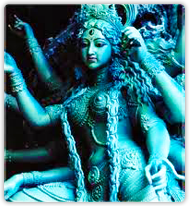Shiva’s Spectacular Gender Divide – Part 5/6
 Deepa Mehta, one of our finest film-makers, was asked why she thought the attitude towards women in India is so depressingly ugly. “Patriarchy,” she retorted succinctly. “We’ve always felt that the girl child is worth nothing and should in fact be aborted even before she is born. The boy can do no wrong. If the girl is treated as a sub-human, or the boy is raised to believe he can do no wrong, then this is what will happen.”
Deepa Mehta, one of our finest film-makers, was asked why she thought the attitude towards women in India is so depressingly ugly. “Patriarchy,” she retorted succinctly. “We’ve always felt that the girl child is worth nothing and should in fact be aborted even before she is born. The boy can do no wrong. If the girl is treated as a sub-human, or the boy is raised to believe he can do no wrong, then this is what will happen.”
But India was not always this way. So what did happen?
My own elliptical quest for answers led me to partially blame the so-called sage Manu, ancient teacher of sacred rites and laws and author of the Manava Dharma-shastra (dates for the creation of this text vary all the way from 1500 BCE to 500 AD) for callously tossing the Indian gender ball down the hill. Some say Manu compiled the laws at the request of ten great sages following a great flood; others claim he was given the sacred laws by Brahma the Creator himself, rendering the Manusmriti divine.
Whatever may be the truth, Manu was no democrat, for the Brahmin (member of the highest caste) was accorded near divine status, while the Sudra (member of the lowest caste) was denigrated and reviled. The Manusmriti specified light fines and penalties for Brahmin offenders; these punishments increased in severity for guilty warriors, farmers, and serfs respectively.
Manu’s views on women in particular make me shudder. Woman, the sage pronounced, was inept, inconsistent, and prone to sensuality—and therefore unfit to exercise individual rights. As an infant, she was to be placed under the dominion of her father; as a wife, she was to be subservient to her husband; as a mother, to her sons. Were she to be widowed in her youth, she was never to marry again; if her husband was an adulterous rogue, she was still bound to consider him equal to God; while she could share in the wealth of the family, her wages were never to exceed half of a man’s wages for the same labor; and worst of all, she was prohibited from studying the sacred scriptures or participating in important social functions.
I am not surprised that the indomitable Dr. Ambedkar burnt the Manusmriti in public. Born into the lowest caste himself, this brilliant man, who battled unimaginable odds to rise to his eminent position, and who crafted the Indian Constitution, would have had excellent reason to do so. I only wish I had been there to dance around that particular funeral pyre.
The good news is that Manu’s influence was not as profound as it might have been. Indians, bless our mutinous hearts, can be notorious law-breakers; many, I am sure, would have scorned Manu’s code for its evil in rigidifying the once liberal caste system and its misogynistic stance.
 In fact, my friend Taraprasad Mishra says that right up to about the eleventh century, Indians were a free-thinking lot with an extremely healthy sexual outlook. Take a look at the Kamasutra (The Art of Love-Making), where union between the sexes is elevated to an unparalleled art form. In those golden days, Indian women were free to choose their own partners and men vied with each other to win their fair hearts in a romantic tradition known as swayamvara. As for the amazing ancient temples of Khajuraho and Konarak, they depict the art of sexuality in both its proud eroticism, as well as its transcendental spirituality.
In fact, my friend Taraprasad Mishra says that right up to about the eleventh century, Indians were a free-thinking lot with an extremely healthy sexual outlook. Take a look at the Kamasutra (The Art of Love-Making), where union between the sexes is elevated to an unparalleled art form. In those golden days, Indian women were free to choose their own partners and men vied with each other to win their fair hearts in a romantic tradition known as swayamvara. As for the amazing ancient temples of Khajuraho and Konarak, they depict the art of sexuality in both its proud eroticism, as well as its transcendental spirituality.
Nor was it just sexual freedom that our beauteous maidens enjoyed—women such as Gargi, Maitreyi, Leelavati and Lopamudra engaged in spirited philosophical and political debate. As for Mirabai, a fourteenth century Rajput Princess whose heart-melting songs of adoration for the blue god Krishna are still sung all over India, she was not born into a free society as her predecessors were; however, she blazes as an example of a woman who wriggled free of an entrenched patriarchy to become an icon for the liberation of all women.
Certainly the Shakti Cult was responsible for providing women with a multitude of freedoms. Predating the Hindu faith, this movement was based on the sacred union of male and female as the balancing forces in the Universe. Male represented the physical manifestation of the “Divine”, while female represented Shakti, or non-material energy. Adherents of this path treated all females as personifications of Nature—a notion which echoes eco-feminism in new-age terminology.
 And so ancient India glorified polyandrous Draupadi with her five gorgeous Pandava husbands, it extolled Mandodari, wife of the demon-king Ravana, who married her brother-in-law Vibhishana after her husband’s death; Tara wed Sugriva after the death of Bali; and Kunti had pre-marital sex—all these women were considered noble, and rightly so, for they were indeed exceptional. As for the Mahabharata, it provides proof that far from being considered a mundane pleasure, sexuality had entered the dimension of the sacred.
And so ancient India glorified polyandrous Draupadi with her five gorgeous Pandava husbands, it extolled Mandodari, wife of the demon-king Ravana, who married her brother-in-law Vibhishana after her husband’s death; Tara wed Sugriva after the death of Bali; and Kunti had pre-marital sex—all these women were considered noble, and rightly so, for they were indeed exceptional. As for the Mahabharata, it provides proof that far from being considered a mundane pleasure, sexuality had entered the dimension of the sacred.
It was after these liberal times that Muslim hordes invaded India and ruled for almost six hundred years. Hindus ordered their women to stay indoors, fearing the hot eyes of their Muslim rulers. And, as ugly fear-based patriarchal values took over, the mutual respect, friendship and love forged between our men and women dissolved into the fear and suppression we so often see today.
Now sex is a creative energy bestowed on all living creatures and inextricably aligned to the level of consciousness of a living organism. Since human beings have the highest degree of consciousness among all forms of life, sex occupies a vital place in human inner consciousness, and is therefore vastly more than a self replicating process. All ancient civilizations performed fertility rituals to celebrate the sexual energy pervading in the elemental Universe; indeed it is through the body that both body and mind can be transcended, for orgasmic ecstasy suspends the body and elevates consciousness.
Part 1
Part 2
Part 3
Part 4
Part 5
Part 6





